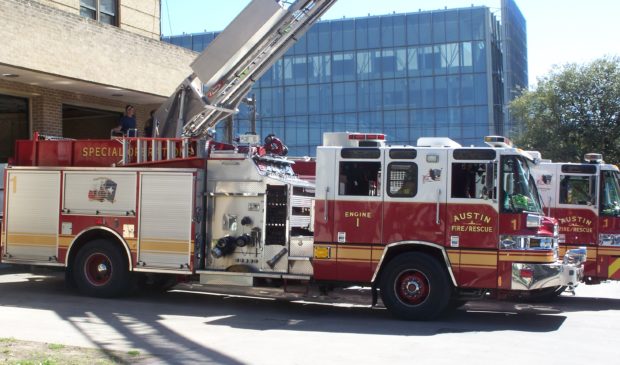Public safety departments present budget proposals to Public Safety Commission
Wednesday, June 8, 2022 by
Emma Freer Austin’s public safety departments – police, fire and EMS – are preparing for the annual budget process in July and August by forecasting budgets and drafting wish lists, all of which include additional funding to fill vacant positions. Meanwhile, a group of more than 30 community organizations has drafted a Community Investment Budget for Fiscal Year 2023, which recommends City Council invest in pay raises and eviction prevention for EMS staff given rapidly rising local housing costs.
The Austin Police Department forecasts a $451.7 million budget in Fiscal Year 2023, up 2 percent from FY 2022, according to a Monday presentation to the Public Safety Commission. APD Assistant Director Michelle Schmidt told commissioners this proposed budget is preliminary and hinges on Council approval. The bulk of the increase is driven by personnel costs, including pay raises negotiated in the police labor contract.
APD also aims to ask for an additional $4.1 million to replace a 22-year-old helicopter, hire four sworn detectives to the sex crimes unit and add 17 civilian employees to comply with recommendations in the Kroll report and a new state law that requires law enforcement agencies that have filed a criminal case to provide a written statement affirming all required evidence has been disclosed.
The Public Safety Commission voted to recommend Council fund all but the helicopter replacement, at an estimated $1.5 million.
“It’s not that we want an unsafe helicopter flying around the skies in our community,” Commissioner Rebecca Webber said. “But rather that we want money invested in public safety initiatives that we believe work.”
The Austin Fire Department forecasts a $228.7 million budget in FY 2023, up 4 percent from FY 2022, according to a presentation at the same meeting. AFD Assistant Director Dr. Ronnelle Paulson told commissioners the increase is largely due to personnel costs as well as the planned opening of a new fire station near Loop 360, among other drivers.
AFD also plans to ask Council for up to $6.3 million in additional funding, including to expand the fire marshal’s office, which faces increased demand for inspections due to the city’s continuing growth. Commissioners voted unanimously to recommend Council fund this and other priorities.
Austin-Travis County EMS forecasts a $111 million budget in FY 2023, up 5 percent from FY 2022, largely due to personnel costs, according to a presentation by interim Assistant Director Carlos Ledesma.
The department plans to ask Council for an additional $5.2 million to increase staffing and retain existing employees, among other requests, which the commission unanimously voted to recommend.
EMS currently leads the public safety departments in terms of its sworn vacancy rate, which is 22.6 percent, according to a May 19 memo to Council members from Assistant City Manager Rey Arellano. APD and AFD’s sworn vacancy rates are 10.5 percent and 8.6 percent, respectively.
Assistant Chief Teresa Gardner told commissioners the vacancies are fueled by overlapping challenges: rising housing costs, limited staff dedicated to recruiting, hiring requirements and burnout stemming from the pandemic and Winter Storm Uri.
“It has been a difficult time for people to maintain their careers here,” she said.
Kathy Mitchell, policy coordinator at Just Liberty, presented on the Community Investment Budget, which the commission unanimously voted to recommend for Council approval. Priorities include pay raises for EMS sworn staff to address these vacancies.
“We believe that one of the most important things to do is seriously increase the wages that we’re paying our paramedics so that they can hire them,” she said.
The Community Investment Budget also calls for continued eviction prevention, which was included in the last budget thanks to federal American Rescue Plan Act funding.
The average rent in Austin is $1,648, up nearly 16 percent year-over-year and outpacing growth in the Houston, Dallas-Fort Worth and San Antonio metros, according to the June market report from ApartmentData.com.
“To do that out of general funds is a heavy lift, but we think in terms of priorities it’s one of the most important, urgent crises we’re going to have to deal with this year,” Mitchell said.
Photo made available through a Creative Commons license.
The Austin Monitor’s work is made possible by donations from the community. Though our reporting covers donors from time to time, we are careful to keep business and editorial efforts separate while maintaining transparency. A complete list of donors is available here, and our code of ethics is explained here.
You're a community leader
And we’re honored you look to us for serious, in-depth news. You know a strong community needs local and dedicated watchdog reporting. We’re here for you and that won’t change. Now will you take the powerful next step and support our nonprofit news organization?









